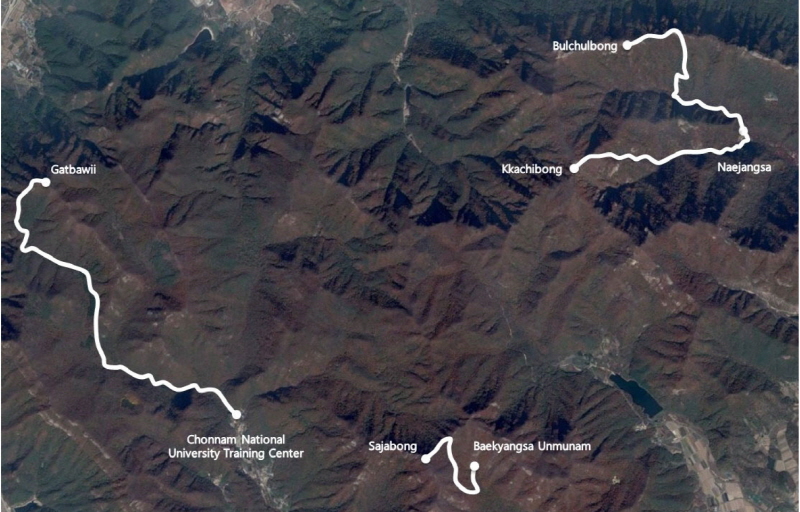Abstract
In a survey on higher fungi from 2004 to 2011, and also in 2013, in Naejangsan National Park, a total of 2 divisions, 7 classes, 21 orders, 74 families, 229 genera, and 521 species were observed. Dominant species belonged to the families Boletaceae and Russulaceae (44 species), Agaricaceae (35 species), Polyporaceae (29 species), and Amanitaceae (27 species). For the habitat environment, 21 families, 44 genera, and 192 species (36.9%) (63 species of poisonous mushroom, 79 species of edible and medicinal mushroom, and 43 species of unknown edible & poisonous mushroom) of ectomycorrhizal mushrooms were found; 41 families, 118 genera, and 199 species (38.2%) (14 species of poisonous mushroom, 85 species of edible & medicinal mushroom, and 90 species of unknown edible and poisonous mushroom) of litter decomposing and wood rotting fungi were found, and 29 families, 66 genera, and 121 species (23.2%) (8 species of poisonous mushroom, 54 species of edible and medicinal mushroom, and 47 species of unknown edible & poisonous mushroom) of grounding fungi were found, and 9 species were the other habitat. In terms of seasonality, most of the higher fungi were found in July, August, and September. In terms of altitude, the most species were observed at 200~299 m, and populations dropped by a significant level at an altitude of 700 m or higher. It seemed that the most diversified higher fungi occurred at climate conditions with a mean air temperature of 25.0~28.9°C, a maximum air temperature of 30.0~33.9°C, a minimum air temperature of 21.0~24.9°C, a relative humidity of 73.0~79.9%, and over 400.0 mm of rainfall.
Figures & Tables



